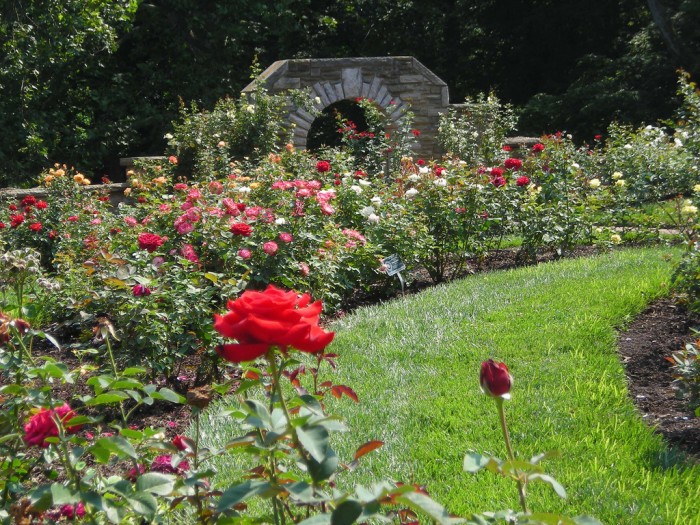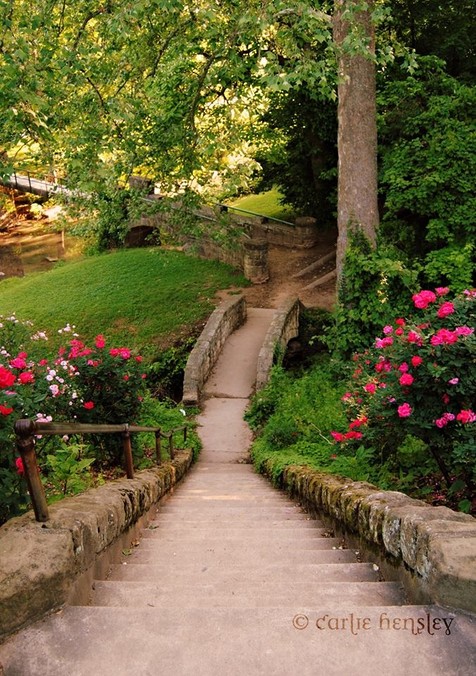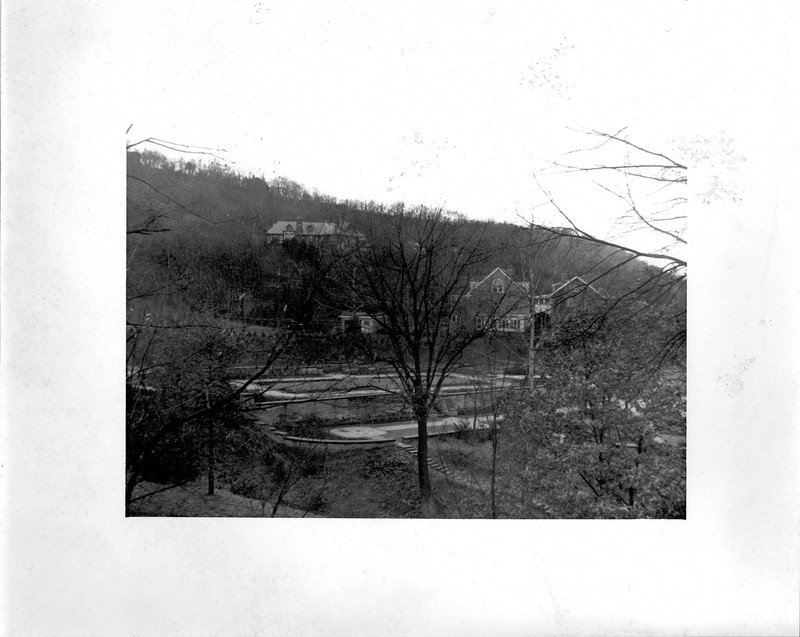Ritter Park Rose Garden
Introduction
Text-to-speech Audio
Images
Garden in full bloom

Staircase leading up to the garden

The Rose Garden in 1935, sometime around its creation. Image courtesy of Marshall University Special Collections.

Rose Garden postcard from the 1930s. Image courtesy of Marshall University Special Collections.

Backstory and Context
Author-Uploaded Audio
Listen to a narration of this entry's description by Steven Cody Straley.
Text-to-speech Audio
For many years the area that became Ritter Park was merely an empty strip of land on the south end of Huntington. In the early 1910s Mayor Rufus Switzer successfully advocated to have a city park created on the property, following public opposition to a plan by the city council to construct an incinerator at the site. Ritter Park officially opened on September 11, 1913; it was named after Charles Lloyd Ritter, a local businessman who donated an extra twenty acres of land to bolster the size of the park. The land designated as the park actually remained largely undeveloped for the next several years. In 1925 the Huntington Board of Park Commissioners was established to operate Ritter Park. For the next decade the Board worked to develop the park and add facilities.
One of the major improvements made by the Board of Park Commissioners was the creation of a public rose garden. The garden was largely planned by Gus C. Wofford, a landscape architect hired by the Board to design new sites in the park. In addition to the garden, Wofford was also responsible for designing the amphitheatre, stone bridges, picnic shelters, a tulip garden, and a series of lily ponds. The Rose Garden had opened to the public by 1935. The following year a Jacob Eversdyke was hired to be its first rosarian. The garden’s characteristic stone works, including retaining walls, flights of steps, benches, and a center arch, were built by the Works Progress Administration, which was responsible for much of the construction at the park during the 1930s. The garden also originally included lily ponds, which have since been dismantled.
The Rose Garden underwent renovations during the 1970s, and in 1997 a maintenance shed, off-street parking, and a visitors’ center were added to the site. The center, named the Room With A View, is available to rent for private events. The garden contains around 3,000 rose bushes, representing over 200 different breeds. The flowers typically reach full bloom in late May or early June. It is a designated test garden; new batches of roses are sent here each year to be tested before being offered to the public for home gardens. Every November the public is also invited to collect clippings from the rose bushes to grow their own plants at home. The Rose Garden is a member of the American Rose Society and has been voted one of the best rose gardens in the nation.
Sources
Casto, James E. Huntington Chronicles. Charleston, SC: The History Press, 2018.
Clarkson, Lee R. “The Ritter Park Rose Garden: a rose by any other name wouldn’t smell as sweet.” Huntington Quarterly 52 (1999). Accessed July 7, 2019. https://www.huntingtonquarterly.com/2018/09/26/issue-52-rose-garden/.
Hager, Beth and Austin St. Clair. “Ritter Park Historic District.” National Register of Historic Places Registration Form. September 1990. Accessed July 7, 2019. http://www.wvculture.org/shpo/nr/pdf/cabell/90001774.pdf.
Miller, Tom D. “Ritter Park.” e-WV: The West Virginia Encyclopedia. February 11, 2013. Accessed July 7, 2019. https://www.wvencyclopedia.org/articles/89.
“Rose Garden.” Greater Huntington Park & Recreation District. Accessed August 11, 2019. https://ghprd.org/index.php/rose-garden.
